
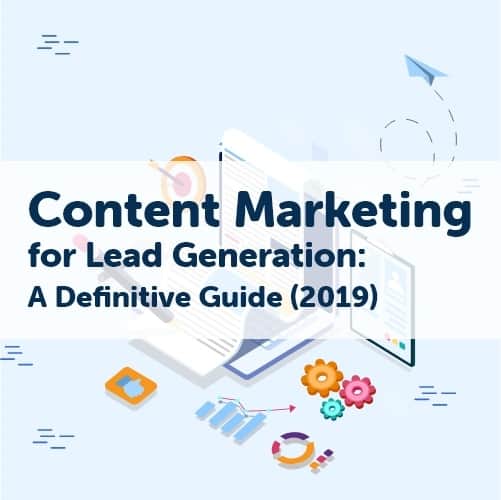

is a phrase that fairly affirms the relevance of
content marketing in today’s convoluted digital marketing landscape.
When it comes to generating leads, content marketing might not be the first strategy that comes to the mind of the average marketer. However, the effectiveness of content marketing has left no room for doubt, that it does indeed form the crux of marketing. Be it SEO or social media, email or landing pages, no digital marketing channel for lead generation is complete without content. Hence, the significance of content marketing.
Unfortunately, many marketers find it difficult to distinguish between content that doesn’t work and content that creates the right impact when it comes to generating leads. If you are a content marketing novice looking to generate more leads or an expert looking to brush up his/her skills with the most up-to-date information, you are in the right place. We have compiled an ultimate guide to educate you on how to use content marketing for lead generation purposes.
Free Template: Content Editorial Calendar 2019 ( Download now )
Content marketing has been around far longer than the internet itself. Content marketing is all about telling stories, something we humans have been doing since time immemorial.
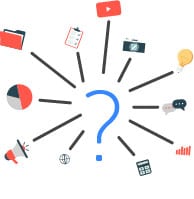
Content Marketing Institute defines content marketing as:
“The strategic marketing approach of creating and distributing valuable, relevant, and consistent content to attract and acquire a clearly defined audience – with the objective of driving profitable customer actions.”
When it comes to digital marketing, regardless of the channel, content forms its core.
Just think about it, without content, SEO has nothing to optimize for the search engines. Without content, you cannot promote anything on social media.
Every link mentioned by a marketer points out to a piece of content. Every email, every landing page, every description, and every tweet – these are all examples of content.
As Ian Lurie of Portent, Inc states, ”Content is anything that communicates a message to the audience. Anything.”
Content is at the heart of everything a marketer does. And content marketing is the use of digital content to reach the goals of an organization.
So, be it acquiring new customers or generating quality leads, content marketing is at the nucleus of it all.
Most businesses hesitate to allocate resources to content marketing. Not because they are reluctant to do so, but because they do not entirely understand or realize the benefits of content marketing.


When you create content, you give your audience something to discuss or debate. And, when they talk about you, they’re indirectly informing everyone around them about your existence.
Receiving recommendations about the quality of your content (and your business) to create brand awareness is the golden egg of marketing.
When you create content, you bridge the gap between potential customers and your brand. The closer you get to them, the better your chances are of making a sale. This is accurate even if your content doesn’t mention your products/services.
Content marketing is the foundation upon which an entire marketing campaign rests. When creating content, you need to coordinate with each team to understand and represent their perspectives better.
You can work with the design team to develop artistically mind-blowing illustrations. You can coordinate with the social media marketing team to understand the latest trends. For content marketing to succeed, everyone needs to work together!

Traffic is the most apparent benefit of content marketing. When you create great content, you get more people to visit your site. As you generate more traffic, people become aware of your company and its product/service.
Great content adds editorial links, which you can use to inform the search engines of your importance. Once the search engine analyzes your authority, it helps you crawl your content, further improving your rank. And with it, visibility of your brand to your target audience!
Personalized product descriptions that focus on convincing people about the uniqueness of your product/service works well, especially when you are looking to generate more leads. When convinced, they usually do become paying customers.
The model of the traditional marketing funnel revolves around the idea that your pool of potential customers grow smaller as they move towards their first transaction with your business.
There are a great many people at the top of the funnel who are aware of your business. They are willing to buy your product/service. As they move further along the funnel, the number of people willing to pay for the product/service decreases. The bottom of the funnel is smaller because only a few folks end up buying what you have to offer.
The mission of every marketer is to make sure their funnel is robust enough to ensure a higher number of conversions.
Now, here is the cool thing about content marketing. Despite a common myth that content marketing is a top-of-the-funnel strategy, you can use content to reach out to more people at any stage of the funnel.
According to marketing gurus, content increases interaction and widens the neck of the funnel. This ensures that more people move towards conversion. Since content marketing is all about effective communication, you can tailor the message your company delivers according to your audience.
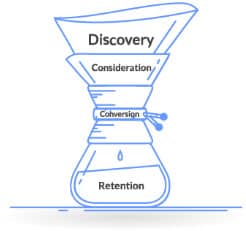
Content marketers use different forms of content for the various stages in a marketing funnel.
Blog posts, webinars, long-form articles, comprehensive guides, videos, and email newsletters
Case studies, how-to articles, demos, and product descriptions
Testimonials, reviews, and a streamlined sales process
Email outreach, documentation, and special offers streamlined sales
process
Each stage requires a unique approach to the content you share. Using the right form of content marketing at the right stage will make the task of prospecting a smoother, more effective process.
However, look at some of the most exceptional content that was generated in 2018. They were all super promotional.
So, where does that put you as a content marketer in 2019?
Well, here are some content marketing strategies that you need to keep in mind for 2019.

Content is (and will be) the most effective channel of brand promotion. However, in 2019, the material that is to be produced should be more than just a mere promotional tool. It should reflect your brand’s voice. It should clearly state your company’s mission and how much you value your audience.
94% of consumers stay loyal to a brand that values their preferences and maintains transparency.
Align the message of your content with the mission of the company by using your content marketing initiatives. Design your content to help your target audience achieve their goals. Provide unique solutions to their problems using different pieces of content.
In short, create transparent and valuable content to gain popularity in 2019 and beyond.
According to Jeff Bullas, content personalization enables brands to stand out from their competitors and boosts engagement levels. 2019 is all about differentiating your brand from your competitors, and content is the best way to do so.
When stating examples in your articles, draw references from your own experiences. Address your audience directly. This will help your content stay relevant to everyone.

Articles that are over 1,000 words appeal to brand loyalists. It is a straightforward equation – the more interested your audiences are in your product, the more they would want to learn about it. Also, search engines tend to identify long-form content as more valuable.
However, instead of writing long-form content aimlessly, opt for topic clusters. Pick one topic and craft several long pieces around it. Content clusters not only appeal to the need for search engines but also ensure that your customers get everything they are looking for, all in one place.
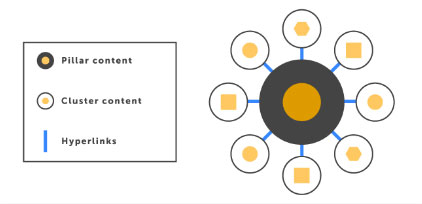
Videos are the new “it” in content marketing.
Video is highly engaging and is preferred by all, regardless of the industry. With the inclusion of more videos in your content will increase its relevance. This ubiquitous trend is a must to make your content stand out in 2019.

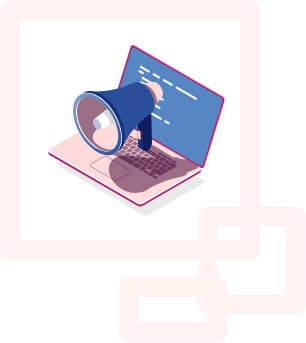
If you like sticking to good old “how-to” lists, it is time you reconsider your tactics. These work well; however, if you want to connect with your audience, you need to tell them a story. It can be your story, drawn directly from your experiences, or it can be a motivational quip borrowed from someone else.
The idea is to humanize your brand, making it easier for your audience to connect with you. You can also include the testimonials of your customers when sharing product descriptions. These simple yet effective strategies allow your potential customers to relate better to your brand.
Content marketing aligns with your company’s goals and targets. It lays the groundwork for digital marketing.
To learn how to generate leads by leveraging content marketing through various channels, keep reading…
These are just WordPress users. If you count all the blog posts, well, those numbers will undoubtedly be higher. With fierce competition such as this, you might face a hard time getting noticed and generating leads.
However, there is always a work-around.
To rank on the first page of Google’s search results, you need to invest in SEO. And, SEO is nothing without content.
Content and SEO together form a killer duo that can shape the future of your business.
When writing content for search engines, several factors must be taken into consideration. Right from the type of SEO to the keywords implemented; every small aspect has a role to play and counts.

According to Wikipedia, Search Engine Optimization or SEO is “the process of increasing the quality and quantity of website traffic by increasing its visibility to the users.”
SEO relates to the improvement of a website’s visibility using organic or natural results. Translating it further, SEO is the process of optimizing content so that search engines show it as a top-ranking result for a particular keyword.
SEO is the magic spell you cast on your content potion to ensure that it shows up as one of the top-ranked results. SEO’s significance is not just to generate high-quality leads for a business, but to also increase a website’s overall credibility.
There are various types of SEO in the digital world; however, for the sake of content marketing strategies, let’s stick to the two most prevalent versions –
1. On-page SEO
2. Off-page SEO
On-page SEO refers to the practice of optimizing individual webpages to rank them higher on search engine results. You can optimize both the content and HTML source code of a page to influence its position on search engines.
On-page SEO primarily involves optimizing –
On-page SEO informs search engines of just what your website is all about. It helps establish the validity of the page.
Off-page SEO refers to activities that you perform outside the boundaries of your website. This type of SEO is essential to improve the domain authority and page authority of your website.
Off-page SEO is all to do with activities that drive awareness and referral traffic to your website, primarily from other sites.
Off-page SEO includes -
Off-page SEO lets search engines understand the importance and value of your website. This type of SEO helps search engines understand the popularity of a website.
It doesn’t matter whether its on-page or off-page SEO you are opting for, your content marketing strategy should revolve around creating credible pieces of information. If your final goal is to generate more leads, you should focus on crafting SEO content that stands out.
You can’t just put together a bunch of words on a page and expect people (and search engines) to be drawn to it. To generate leads and impress search engines, you need to write appropriate SEO content. Here’s how:

When posting content on your site or even writing guest posts, make sure you make an effort to get noticed.
And how do search engines notice you?
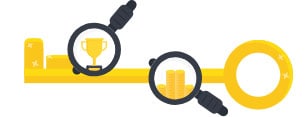
Find the keywords most relevant to your topic. Look for factors such as search volume, CPC, and probability to rank when picking keywords. The higher the volume, the more challenging it is to increase keyword density.
Thankfully, there are various tools available today that will allow you to search for keywords seamlessly. Keywordseverywhere, Ubersuggest and LSI graph are quite reliable options.
Finding keywords and maintaining a spreadsheet for the same won’t cut it. You need to implement those corresponding keywords in all of your content, and appropriately, of course.
We have come a long way from when writers would haphazardly inject keywords into their copy.
The art of keyword placement must be followed.

Another thing to bear in mind is to not force the use of keywords and make your content appear and sound rubbish! Keywords should be stitched and fit seamlessly in your copy.

Writing a fresh set of 100 words is better than not writing at all? Well, SEO doesn’t work the way anymore.
Research shows that search engines favor “in-depth” content that contains at least 2000 words. According to popular belief, the longer your content, the more credible your content.
And long-form content also seems to perform better when engaging an audience and generating leads. Long-form content shows that you mean to cater to the needs of your audience in a more in-depth manner.
Add a few extra paragraphs if necessary; but, stay off the fluff!
(Because, believe it or not, both your audience and search engines can smell that from a mile away)
Search engine optimization and well-formulated content marketing strategies are essential for your website to grow. Whether writing articles for your website or that of another, ensure you aim to make your content lengthier. And, include the right number of keywords for easier optimization.
In recent years, social media has become an invaluable platform. Engaging people, building brands, generating leads! Communication at its finest, to date.
The total worldwide population is 7.7 billion.Social media has 3.499 billion active users. A rather big market to prospect to, don’t you think?
MATH IS NEVER WRONG!
Social media is an essential platform to generate leads and surge business growth. And good content ensures that you reach the right audience at the right time with the right message.
Writing for social media is quite different than writing for search engines. Let’s understand the types of content that work on social media and how to make these engaging.
So, have you ever wondered what kind of content gets the greatest number of shares on social media? Or as a business, what type of content will catapult you into the limelight? What kind will encourage your audience to devour and share your content without hesitation?
As a business, you need to have an appropriate content marketing strategy in place, especially when dealing with social media.
Without an effective strategy in place, the risk of falling behind is almost inevitable.
When it comes to social media content, you need to serve-up material that your audience is looking for, even if they don’t know it just yet.
And what’s worse is that you have to do so before your competition does!
But, most content marketers fall short of ideas with respect to the different types of social media content they can publish on platforms of their choosing. Here are a few that you can experiment with –
Podcasts have started gaining momentum in recent years. Defined as an episodic series of audio or video files, podcasts can be downloaded and listened to.
When sharing a podcast, create a static image over the file and upload the same as a video. Podcasts serve as the perfect recipe for success.
Live streams refer to media files that are recorded and broadcasted simultaneously. Facebook, Twitter, YouTube, LinkedIn, and Instagram are great platforms to conduct live streaming events.
Due to their highly engaging nature, live streams are often recognized as lead generating machines by marketing pundits.
A graphical representation of information is known as an infographic. The implementation of images, illustrations, and graphical representations to present information to an audience.
Eye-catching and informative, infographics can create a lot of buzz on social media platforms and can rack up its fair number of shares.
A webinar is an acronym for web-based seminar. From presentations to lectures, from workshops to seminars, all is included. Webinars are transmitted via the internet using video conferencing software.

Since they are interactive in nature and provide the ability for real-time discussions to be conducted, the popularity of webinars has witnessed a strong surge in recent years. P.S.
Why should your potential prospect choose you over your competitor? Sharing testimonials is a great way to showcase your brand’s credibility. Testimonials allow your current audience to gather the information that you wish to share about your service before they make a decision to invest.
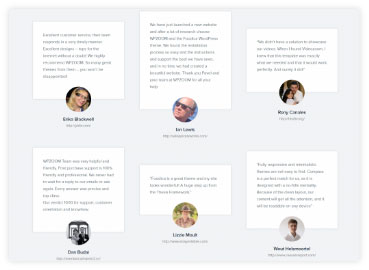
You can either upload screenshots of your client testimonials or get an audio/video recording of the same. The latter tends to be more trustworthy. Also, ensure that these testimonials are visible on your social platform profiles.
To generate more leads from social media platforms, you should focus on curating the right content. To ensure that you are writing engaging pieces, here are a few tricks to keep in mind –

All social platforms are different from one another. Twitter differs from LinkedIn, which is in-turn different from Facebook, and the same goes when compared to Twitter!
Hence, there is no shade of doubt that different platforms need optimized content to be constructed specifically for them.
For instance, LinkedIn is an out-and-out B2B platform, whereas, Facebook witnesses a healthy balance of both B2B and B2C audiences. The content you create for the former might not perform as well for the latter and vice-versa. While more content-based pieces may work on LinkedIn, graphical material may have more of a significant impact on Facebook’s audience.
To target audiences appropriately, and garner the most engagement, prepare content that fits each platform respectively.
There are different types of content (as mentioned earlier) that you can include in your social media posts. To build a well-rounded content marketing strategy, you need to try out each one of the content types.
Also, experimenting with different types of content will give you an idea of what works best for your audience.

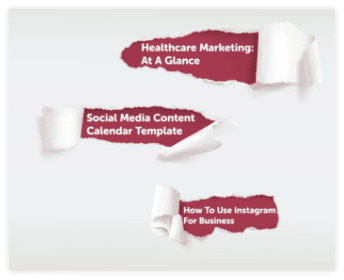
To witness your click-through-rates increase, you need to craft social media headlines that stand out. The headline you use can either make or break your content.
A catchy headline can not only help you get a few extra clicks but also help in generating more leads. Clickbait works well on social media and have been utilized for some time now.
Your content can go viral by assembling the right headline. So, invest more time on creating stellar ones.
Personalization is what makes social media so appealing. No matter what type of content you choose or how trendy the topic is, if it doesn’t strike a chord on a personal level with your prospects, it’s safe to say that you’ve just wasted your time and more importantly theirs.
Don’t be hesitant to address your audience directly. Weave second-person narratives or points-of-view in your posts to increase the appeal factor.
A majority of your audience, no matter how invested they are, will only skim through your content.
This may be a hard pill to swallow, but it’s the truth.
So, if you want to engage them, you need to invest in content that is concrete and free of fluff.
Work on your headlines and make them unique and pick topics that are trending. To ensure that your readers get hooked, create content that they can relate to.
Social media is snowballing, and businesses must act right now to make the most of it. When creating a content marketing strategy for social media, keep in mind who your audience is and the platform you are using to target them.
To generate leads using social media, your content game must be on-point.

Most businesses have a genuine concern with regards to email marketing. With new channels on the rise, email’s relevance, one that has strived for decades has often been questioned.
However, data suggests a different tale.
In the B2B landscape, email marketing is the third most influential source of information sharing.
Emails are an indispensable aspect of content marketing that will assist in allowing your business to reach the epitome of success.
To understand how to generate more leads via email marketing campaigns, you first need to take a look at the different types of content that work and how you can craft them with a personalized touch.
Wikipedia defines email marketing as “the act of sending a commercial message, typically to a group of people.”
In its broadest sense, every email you send to a potential prospect or a current customer is email marketing.
Even with the emergence of social media and SEO,
To build an email list is one thing but, creating one that it is loaded with quality leads is no small feat. The chances of things going south and fast are rather high. When it comes to writing emails, the type of content you put together is quite different from that of other digital marketing channels. The content included in an email is typically personal, simple, and useful. It must have the power to appeal to your audience.
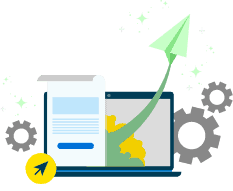
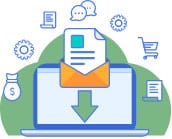
With an impressive ROI of over 3000%, email marketing is used by all businesses in some form or the other. Every savvy marketer knows that a robust email strategy can supercharge their lead generation efforts.
Content is integral to emails. The kind of email you send to your prospects has an impact on whether they will become a lead or not.
Here are five types of compelling emails you should include in your content marketing strategy –
83% of B2B companies send newsletters to their subscribers. These are sent consistently. For instance, you can choose to send your newsletter on Tuesday mornings (the best day to send emails according to ten different email studies).
This type of email consists of incentives, blogs, links to your website, webinars, or updates made by the company.
The content you include in the email body should be valuable to your audience. Since they subscribed for the newsletter, keeping the material interesting is a necessity.

Emails are continually recognized as successful lead generation tool. However, sending specific lead generation emails can be immensely practical. Lead generation emails are typically a series of related emails sent over several weeks.
The idea is to move leads through your sales funnel and ultimately convert them. These email sequences not only save on time, but they generate an 8% click-through-rate.
As for the content, it should be related to a topic that is currently trending. With each email sent, you must be in a position to address your audience’s problems and offer suitable solutions.
By the end of the series, your content should have them hook, line, and sinker. Keep it simple and engaging. Oh, and it also helps to add a dash of mystery to your communications.
If your company sells any product/service, transactional emails are a must. In fact, these types of messages have 8x more open rates when compared to other email types. Nevertheless, to make the most of it, you should ensure that the text included is precise and to-the-point.
Since it is easy to grab the attention of users with transactional emails, you can also add a personalized content suggestion or make product recommendations based on their purchase history. This will pique their interest further and generate genuine leads.
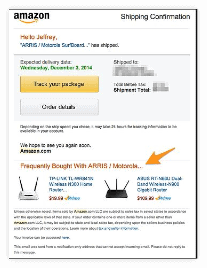
As per the marketing experts at HubSpot, B2B emails are more successful when they are minimalistic and simple. Though it is often established that heavily-designed emails work well with a B2B audience, the truth is far from it.
Using too many elements in your emails can make it appear promotional. Such emails are usually filtered and rerouted to your spam folder. When sharing event invitations, conducting surveys, or even sending blog content, use plain-text emails to increase click-through rates.
Keep the text to a minimum and add fewer images to make it appealing in the most humble of ways.
Milestone emails have 481% higher transaction rates when compared to promotional emails. Milestone emails are simple yet effective. Your subscribers’ sign-up anniversary or company anniversary are all considered to be milestone emails. Add a simple message congratulating them on the achievement, and it tends to stand out. (Personalization works!)
Combine milestone emails with various promotions to increase the number of clicks and leads generated from the same. P.S.
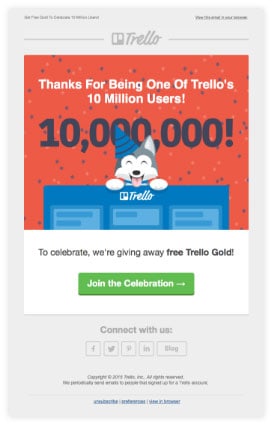
Personalization is often used by companies to target and engage potential prospects, especially when the end goal is to generate leads.
There is science behind the concept of personalization.
According to experts, personalizing content makes it more receptive.
Tailored content makes prospects feel more special and unique.
To create more engaging experiences, a lot of brands are opting for email personalization – emails that feel less automated and more human.
Here is an example of email personalization –
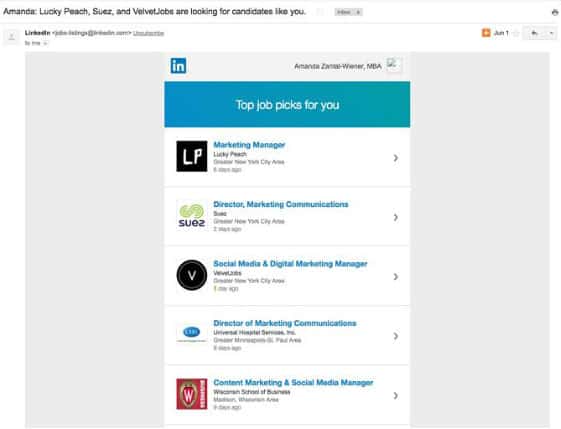
You may not notice anything distinctive about this email, but what’s interesting is LinkedIn isn’t trying to upgrade their users to paid account holders. Instead, what they aim to do is to pique the interest of the receiver.
LinkedIn sends personalized job openings to the receiver. The content received by the user may be of significance to him/her. This means that he/she will proceed to open it to know more, and will get redirected to their website.
Email marketing is not going anywhere, anytime soon. It is a proven lead generation tool. However, for successful email marketing campaigns, you need to craft content that attracts and helps convert. When writing emails, keep your content personalized and specific.
Landing pages are some of the most significant webpages. Not only do these serve as the place where your visitors “land,” but these are one of the most practical techniques of generating leads.

The information included on landing pages is often considered pivotal. Hence, it is essential to learn how to write content for a landing page.
Landing pages drive more leads and sales. If you want your prospects to find out more about your brand, your landing page is ground zero. Combining it with a well-curated content marketing strategy will help achieve favorable results.
A well-written landing page can enhance the position of your website immediately and influence the decision of your customers.
To slay the art of writing great landing pages, proceed further.
Including real-time comments, testimonials, and recommendations from previous as well as existing customers on your landing page will make give you serious credibility points.
Rather than just focusing on the features of your product/service, you should talk about the benefits to pique the interest of the prospects.
Your landing page’s headline can have a significant impact. To get your prospects to read to the entire landing page, you need to create a killer headline if you want to capture their attention.
A landing page should be simple to read and easy to understand. Don’t include words that force your audience to keep Thesaurus handy. Always remember – simplicity sells.
Writing content that sounds strained and robotic will affect the leads you generate from your landing page. Lend your work a human touch, and your readers will surely follow.
There is no doubt that video is the future of content marketing. Add introductory videos to your landing pages to double conversions.
The primary purpose of your landing page is to generate leads and convert them. The task becomes easy when you have convincing Call-To-Action (CTA) buttons. Word your CTAs right and generate a higher number of leads.
Landing pages are essential, and the content you include will play a vital role in generating a higher number of leads.
For a detailed guide on how to write content for landing pages, scroll past here.
There is a common misunderstanding that plagues most bloggers. They believe that just getting people to read their blogs is the end-goal.
They assume that their audience will read their blogs, subscribes to their newsletters, and then proceeds to purchase their products/services.
In an ideal world, this is what can and should happen. But as long as you don’t shake off this misconception, that’s NOT going to happen.
To generate leads from your blogs, you need to put a tad bit of effort.
Unless your content marketing strategy is concrete, and you’re sure about the methods you will implement to generate more leads, you are not going to see any in the foreseeable future.
So, how do you write blogs that generate leads?
Before we discuss the best content marketing strategies for the same, you should first identify the most high-performing types of blog posts. Including the same in your content marketing techniques will reap anticipated results.
A blog is an online journal that discusses a particular topic, in-depth. These are updated frequently and are written for public consumption. It is one of the most prevalent forms of content marketing.
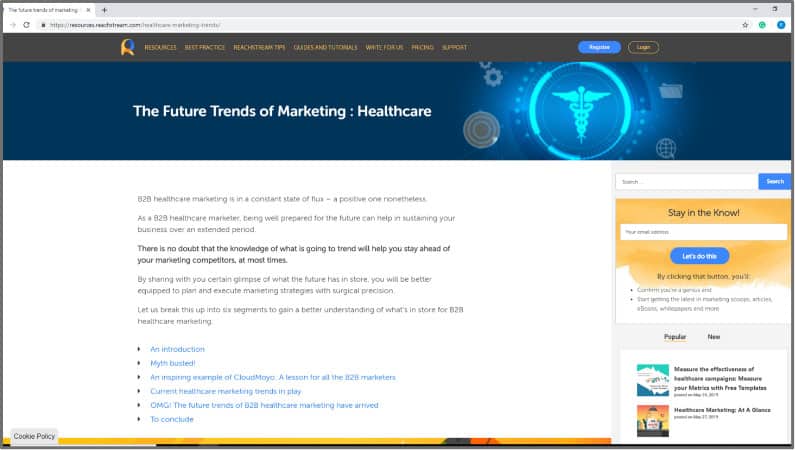
One-third of all online activity is attributed to that of video content. It has proven to be one of the best types of content marketing when it comes to keeping your audience engaged, regardless of the industry they belong to.
Using videos increase organic traffic from search engines by 157%. Videos have an appealing ROI (Return on Investment), which makes it an essential content marketing tool for companies.
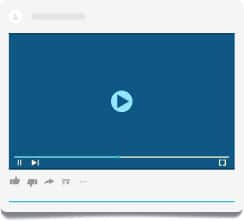
Infographics educate and provide useful information to prospective leads and customers. It is a form of visual content marketing that uses minimal text and more graphical elements to attract audiences.
Most content marketing experts use infographics to explain seemingly complicated topics in a simplified manner.
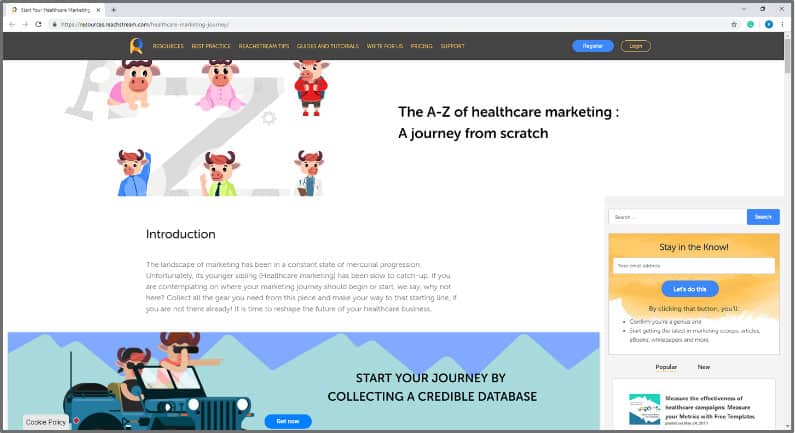
Case studies are one of the most valuable forms of content marketing. These illustrate how your company has helped a customer overcome his/her problem by implementing your solutions.
Case studies add value to the business and help establish a brand’s credibility. These are incredibly effective when generating leads.
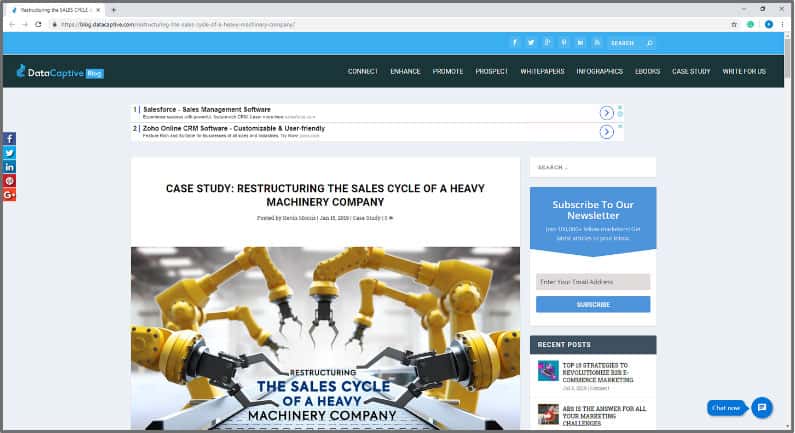
If you want to collect lead information, rely on eBooks. Considered to be the most successful content marketing tactic for generating leads, a long-form eBook can provide business insights to your audience.
These also have an attractive ROI (Return on Investment) and can help generate revenue in the long-run.
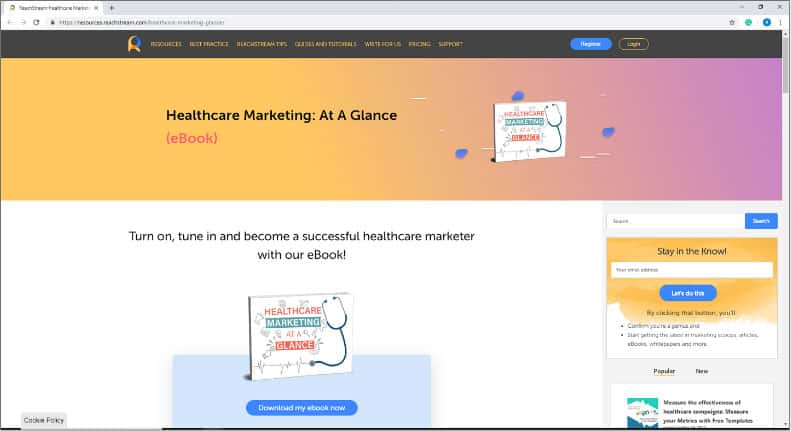
Whitepapers are quite similar to eBooks in their format. This type of content marketing works great for B2B companies. If gated, your prospect will need to provide information before they can gain access to the same.
According to a report, 76% of buyers are willing to exchange information for a whitepaper.
Data-driven and detailed, this type of material in content marketing is known as a lead magnet.

Free downloads are always practical when you want to generate more leads. This type of content marketing technique works immensely, as audiences are always looking for assistance in the form of detailed guides and free templates.
Since these are directly synonymous to readers taking action, the demand for such types of content is high, especially in the B2B landscape.

When your ultimate goal is to generate leads, creating the right type of content is not enough. You need to make it engaging. A boring video can increase bounce rates. Or a rubbish blog can reduce your credibility.
You have 8 seconds to grab your audience’s attention, that’s a second lesser than the attention span of a goldfish. As such, you should direct your efforts to creating exceptionally engaging content.
Before you start writing, you should know who your target audience is and what they are looking for. Instead of playing the guessing game, use analytics and data to decide on topics you wish to expound upon.
If you want your content marketing strategy to succeed, learn more about your target audience, their needs, wants, likes, and even their dislikes.
Yes, people skim through the content before deciding to read it in-depth. Highlighting the essential points in your content using bullets is the perfect way to inform your readers about what to expect.
However, don’t opt for bullet clutter for it can reduce readability. And always remember, bullets are just like headlines, so, avoid writing complete sentences.
You need to format your blog to make it stand out. No one wants to read content collated in one single paragraph!

Readers skim through the content before deciding to read it.
Thus, it is always recommended that you break your article into subheadings.
If your blog posts are pleasing to the eyes, it is bound to produce favorable results.
The B2B audience of today is not all about facts. They want relatable stories. They want to know what happens next.
Buffer conducted a test, where one version of a blog opened with a story that segued into the content. The second version began with a no-nonsense intro and directly dove into the content. Guess what? The first version had more people reading it (all the way to the end) compared to the second one. How much more, you ask? Well, 296%, that’s how much.
The point – tell a story when writing content. It gets the people going!
on Doesn’t matter how compelling your story is or how impressive your headline, if you don’t give your readers anything to act upon, it will be foolish. Many B2B blogs include great content, yet never ask the audience to do anything about it.
Be it signing up to an email list or downloading an eBook, joining a course, or taking a survey; give them something to act on. A Call-to-action that is personal and with greater urgency can increase conversions by 90%.
A blog post without a CTA is a missed opportunity.
Allow your readers to convert into leads with an actionable CTA.
Landing pages are essential, and the content you include will play a vital role in generating a higher number of leads.
For a detailed guide on how to write content for landing pages, scroll past here.

Author
Pitch Your Idea To Your Ideal Customers Today

